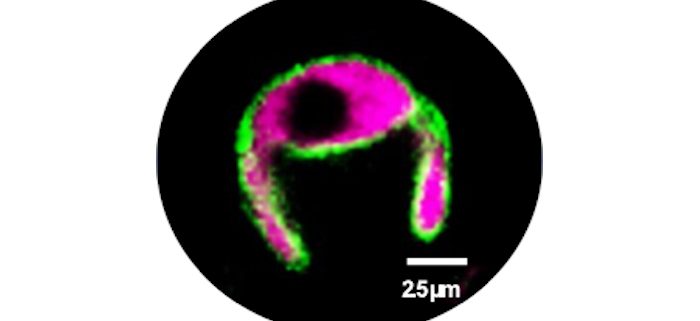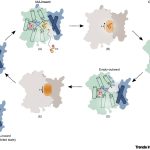Carbon trafficking in green algae
Huang and Krishnan et al. investigate photoassimilate export in Chlamydomonas reinhardtii
By Weichao Huang1 and Arthur Grossman2
1Current position: Faculty of Synthetic Biology, Shenzhen Institute of Advanced Technology, Shenzhen, China
1Previous position: Department of Plant Biology, Carnegie Institution for Science
2Arthur Grossman: Department of Plant Biology, Carnegie Institution for Science
Background: In photosynthetic eukaryotes, chloroplasts supply energy and fixed/organic carbon to other cellular compartments through numerous chloroplast transporters in the chloroplast envelope. Modulating metabolite export from the chloroplast can markedly impact the growth and photosynthetic activity of cells. Additionally, the export of metabolites/sugars from chloroplasts can transduce signals to the nucleus and coordinate the expression of chloroplast and nuclear genes in response to environmental changes and the cell’s metabolic demands. However, the activities and substrate specificities of several of the transporters, the ways in which they are regulated, and how their functions are integrated are not well defined in microalgae such as Chlamydomonas.
Question: What metabolite transporters on the chloroplast envelope are critical for the movement of sugars between the chloroplast and cytosol in the green alga Chlamydomonas and how does this export regulate cell growth, metabolism, cellular redox conditions, and the formation of potentially toxic oxygen radicals?
Findings: We found that the triose phosphate (triose-P)/phosphate (Pi) translocator 3 (TPT3) is a major conduit for the export of fixed carbon, as simple three-carbon sugars, from Chlamydomonas chloroplasts. Mutants unable to make this transporter are light-sensitive and show marked changes in their metabolic profiles relative to unmutated cells; the major shift in cellular metabolism creates a toxic intracellular environment (probably through production of reactive oxygen species) with increasing light absorbance. Additionally, unlike for many vascular plants, Chlamydomonas is unable to compensate for the loss of TPT3 through the activities of other sugar transporters.
Next steps: This work would further benefit from the use of metabolite flux analyses and characterization of other mutants defective for chloroplast sugar transporters. It offers opportunities for assessing the catalytic features of these transporters how they are regulated and interact with each other to insure robust metabolism under dynamic environmental conditions.
Reference:
Weichao Huang (黄伟超), Anagha Krishnan, Anastasija Plett, Michelle Meagher, Nicole Linka, Yongsheng Wang, Bijie Ren, Justin Findinier, Petra Redekop, Neda Fakhimi, Rick G. Kim, Devin A. Karns, Nanette Boyle, Matthew C. Posewitz, Arthur R. Grossman. (2021). Chlamydomonas mutants lacking chloroplast TRIOSE PHOSPHATE TRANSPORTER3 are metabolically compromised and light-sensitive. https://doi.org/10.1093/plcell/koad095




